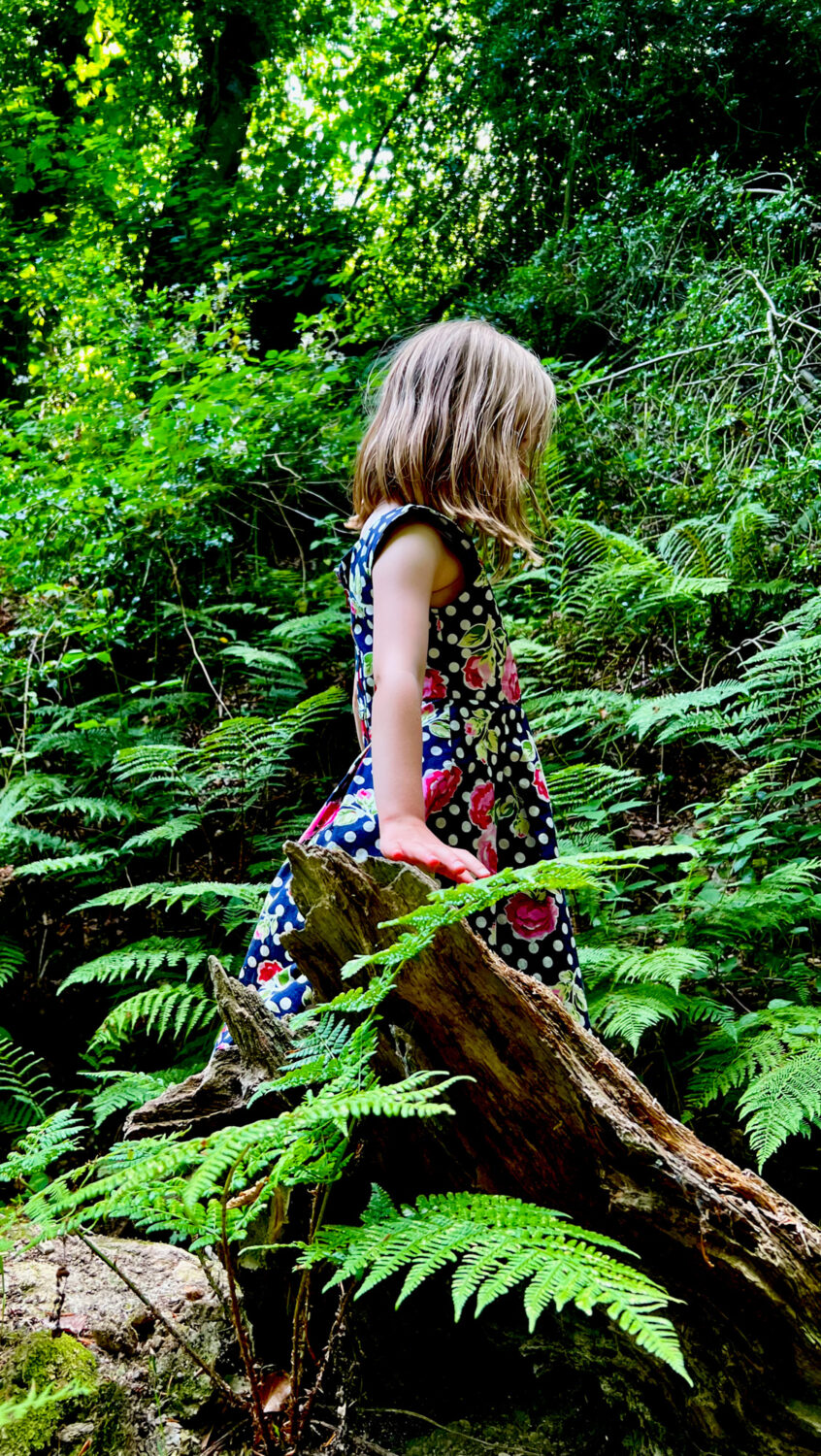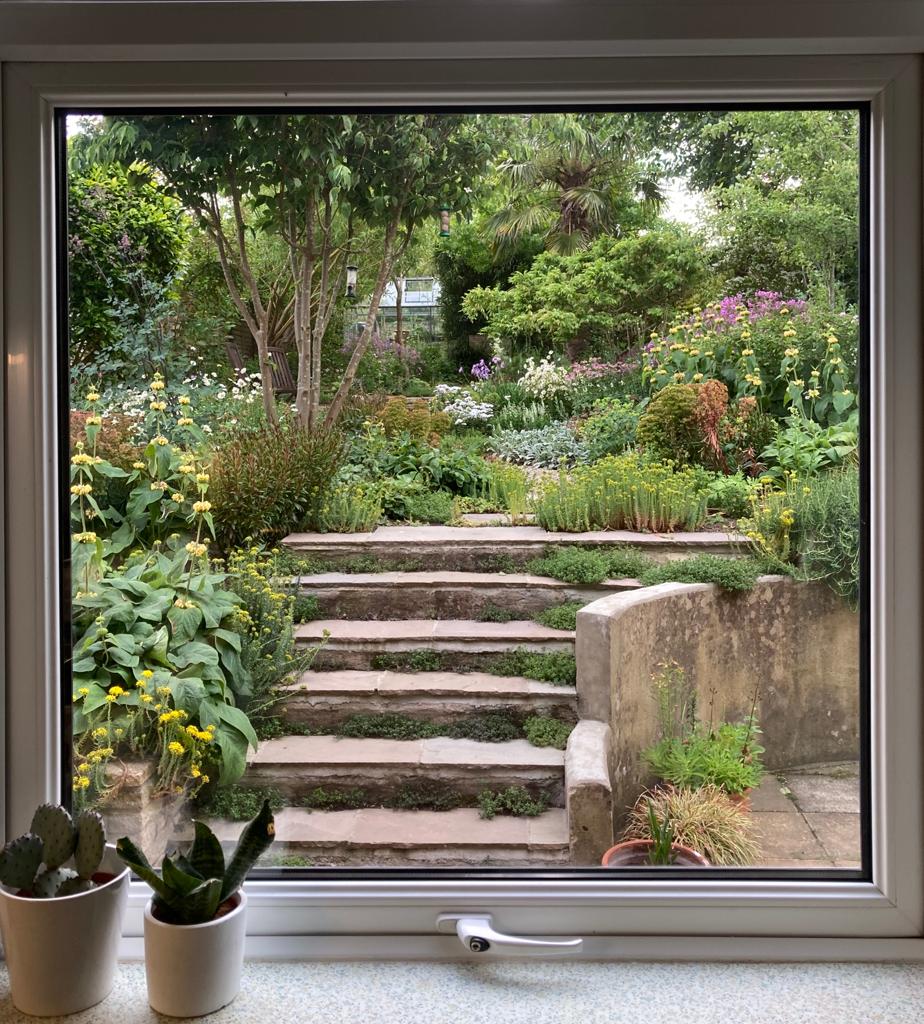Take a Walk on the Wild Side

Written by Max Crisfield
How rewilding our human experience can make for better lives and a healthier planet.
I think most of us would agree, at least in principle, that connecting with nature is a positive thing.
It makes us feel good. It calms us, it soothes us, it puts the complexities and urgency of our lives in some sort of perspective. It gives us clarity and space to breathe. It elicits awe. It resets us, reboots us and reminds us that we are part of the big picture, not separate from it.
So how and why then have we become so alienated from the natural world? Why, according to research cited by Green MP Caroline Lucas in a 2018 Times editorial, do children in the UK spend less time outside than prisoners? Why did that same piece of research find that one in nine children in England had not visited a park, forest, beach or any other natural environment for at least twelve months? And why, in his bestselling 2005 US non-fiction book Last Child in the Woods, did author Richard Louv conclude that an entire generation of American children were being ‘raised indoors’.

All of this makes sobering reading. Indeed, to those of us born in a pre-digital world, those who tend to look back at our own childhoods as halcyon days building dens, climbing trees and idling about on rope swings, it paints a pretty sorry picture. But is this just a case of one generation wishing upon the next the type of childhood that it had experienced? Or likes to think that it had experienced. Because if we are truly honest about it, if we remove our nostalgia specs for just a moment, did any of us actually have this sort of childhood? Wasn’t it all a little less Swallows and Amazons and just a tad more Grange Hill?
Maybe. But one thing’s for sure: we did spend more time outdoors, if only by dint of the fact that there was nothing else to do. We simply didn’t have the distractions. No Internet. No smart phones. No social media.
While acknowledging this propensity to airbrush our own memories of childhood, Louv presents compelling evidence for what he terms a Nature Deficit Disorder among our current generation of children. In Last Child in the Woods and two follow-up books, Nature Principle (2011) and Vitamin N (2015), Louv cites a number of key factors which he argues have led to this predicament. These include:
- increases in traffic and pollution
- poor urban planning and the diminishment of green spaces in our towns and cities
- increased dependence on digital media for social bonding and entertainment
- parental anxieties about their children’s safety
The knock-on effects of which, according to Louv, are leading to ‘a diminished use of the senses, attention difficulties and higher rates of physical and emotional illnesses’.
And, of course, if we are not connecting to nature, we are not caring for nature. And we can all see where that’s got us and where it’s leading us to.
It’s not only our children who are becoming disassociated from nature. We adults are not faring too well either. How many of us get our nature fix from Spring Watch and David Attenborough documentaries, but rarely set foot on a footpath? How many of us grown-ups are equally addicted to our virtual lives at the expense of our nature connection? Come on, hands up…

But surely, we weren’t meant to live such sedentary lives, to swap the great outdoors for a life lived in cosy internment? Our DNA would seem to say otherwise. In evolutionary terms we are hardwired to be active, to learn through physical exertion and play, to engage with nature on a deep emotional and visceral level. Edward O. Wilson coined the word biophilia in 1984 to describe just this: a nascent need for nature connection, an inherent human desire to bond with our green and wild spaces.
The good news is that there is overwhelming evidence to back this position up. There’s hard data, being collected and collated by research bodies, charities and social scientists across the world, which demonstrates that exposure to nature, even in the most prosaic way (simply looking out of the window) can have extraordinary palliative effects, such as:
- increased attention and improved memory
- enhanced creativity and productivity
- mitigation against anxiety and depression
- a demonstrable uplift in psychological well-being

It has even been found that nature contact can help nurture closer human relationships.
So all we need to do is get back out there amongst it all, right? Get our hiking boots on. Build a tree house. Go swimming with dolphins. Well, almost. While it is important to acknowledge that many people simply don’t have access to green spaces, or the time or financial freedom to engage with them in any meaningful way, there are numerous initiatives and organisations, including government bodies, environmental NGOs, educators and youth workers, horticultural therapists, art organisations, urban planners and community groups with remits and strategies to green-up our urban environments and re-wild our human experience.
Positive examples, making real changes, include:
- The National Trust’s ‘50 things to do before you’re 11 ¾’ campaign
- The Oak Project – a national arts programme that uses art, culture and creativity to restore nature connection
- Generation Green – a government funded project to help reconnect young people with nature through work
- Wildfowl and Wetlands Trust – Generation Wild initiative
- Forest School – a nationwide organisation that provides holistic learning through play and exploration of nature
- A new Natural History GCSE – to be introduced to the national curriculum by 2025
But it’s not just about the big schemes and organised activities. Simply paying attention to what’s around us, making microlevel connections – listening to the dawn chorus, sitting on a park bench, feeding the ducks, collecting chestnuts, stroking a cat on your lap, deadheading plants in your garden, looking up at the night sky, sowing seeds on a windowsill – all have tangible benefits.
Prof Miles Richardson, creator of the Nature Connection Handbook, is positive about our abilities to turn the ship around and is unequivocal that ‘fundamental shifts in nature connectedness’ can have massive mutual benefits for humans and nature: ‘The need to transform the human-nature relationship has never been more important. People who feel closer to nature are happier and more satisfied with life and are more likely to take actions that help wildlife and the environment.’
Over the next few months, Planting the Seed will be exploring some of the ways that nature connection can improve our lives, from horticultural therapy and forest bathing to gardening, music and mindfulness. While paddling around in these waters, we’ll hopefully learn just a little more about ourselves, our environment and our duty of care. Because, as Prof Richardson puts it, ‘Whatever our relationship with nature, we can get closer: we can notice more, listen more, enjoy more and care more…’ Amen to that.
Resources:
Nature Connection Handbook https://findingnatureblog.files.wordpress.com/2022/04/the-nature-connection-handbook.pdf
Richard Louv https://richardlouv.com/